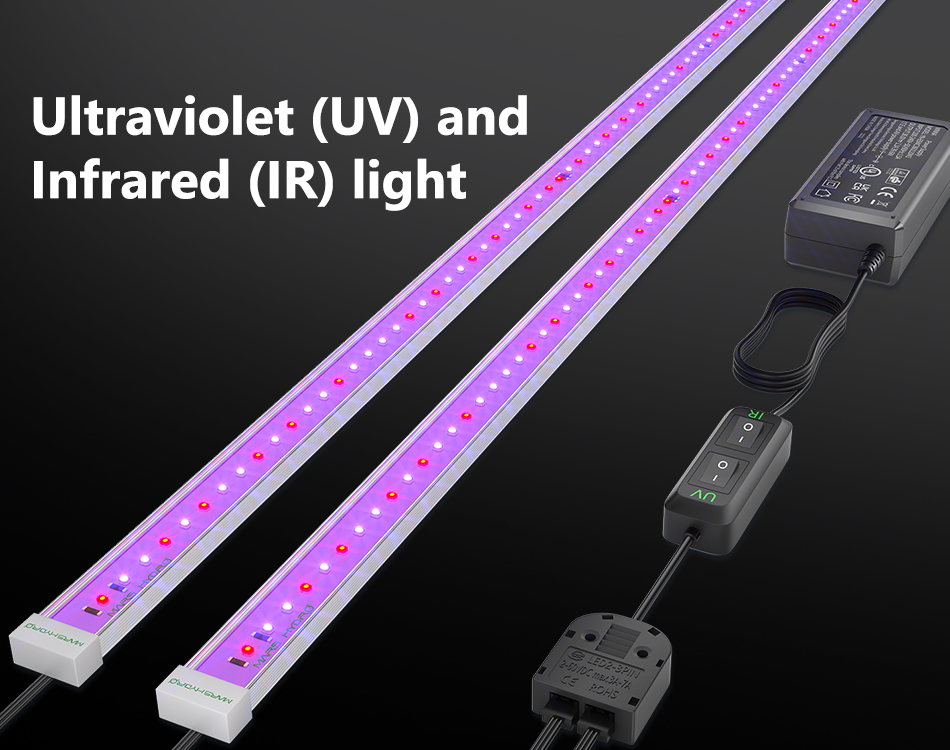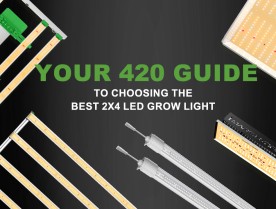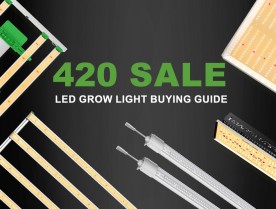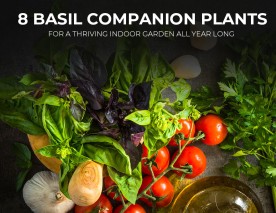
What Are Ultraviolet (UV) and Infrared (IR) Lights?
Ultraviolet light and Infrared light both belong to the “Electromagnetic spectrum”. Radiation in the Electromagnetic spectrum is usually categorized by wavelength. Ultraviolet, Gamma, and X-rays are examples of short wavelengths while Infrared, Radio, and Microwaves are examples of longer wavelengths. Short wavelength radiation is of the highest energy and can be very dangerous. Infrared is usually less harmful. Both UV and IR lights can be used to help plants grow more effectively.
What Are The Effects of UV and IR on Plants?
UV light is comprised of three types of light: UVC with a wavelength of between 100-280nm, UVB with a wavelength of between 280-215nm, and UVA with a wavelength of between 315-400nm.
UV light is effective at recreating a natural environment and therefore making plants act like they are being grown in the wild. UV lights have been known to promote faster photosynthesis, increase leaf areas, increase THC and CBD potency, promote branching, and provide higher resistance to pests. Proper use of UV lighting can also improve plants’ nutritional quality while stimulating biomass production by stressing them. Strains that are grown under UV light tend to have higher dry weights too.
The overuse of UV light can lead to excess UV stress, which in turn can hinder plant growth and lower plant yields. This is due to plants spending more energy on producing trichomes as a way of protecting themselves, as opposed to growing larger and more robust. UV stress can also lead to photoinhibition of chloroplasts resulting in lower biomass production, photobleaching, and the death of leaves.
IR lights utilize far-red wavelengths to elicit a shade avoidance response in plants, leading to accelerated stem growth. There are two procedures known as PS1 and PS2 which contribute to plant growth. Plants exposed to supplemental IR light alongside both blue and red light showed an increase in photosynthesis, the promotion of robust stem growth, proper node spacing along with more flower buds. IR light also appears to help plants transition between different stages of growth, sleep and wake cycles, during the later stages of development. In addition to this, flowers will not bloom until adequate levels of IR radiation have been introduced.
While IR light has been proven to be effective at promoting many aspects of plant growth it is important to note that a large percentage of IR light is felt as heat and can damage your plants if not used correctly. Plants can stretch, become distorted and even die if IR lights are misused.

How Can I Apply UV & IR Light to My Cultivation?
An important thing to note is that the most efficient way to use both supplemental UV and IR lightwill vary depending on the plants you wish to grow, along with the size of your growing space. You will need to research the specific needs of your individual plants in regards to their light, PPFD, UV, and IR requirements. With this in mind, here is a general guide on how to apply UV and IR to your cannabis cultivation.
During the vegetative stage, we recommend you provide your plants with between 16 to 18 hours of light per day to help ensure they grow to become healthy and high-yielding plants. The recommended PPFD for the vegetation stage is between 400-600 µMol/m2/S and we also recommend providing your plants with 1 hour of supplemental UV light per day in the mid-to-late vegetative stages.
During the flowering stage, we recommend adopting a more natural light cycle for your plants, giving them 12 hours per day of both light and darkness. We recommend turning your lights on to a medium setting to maximize the yield and improve potency. The recommended PPFD for the flowering stage is between 800-1,000 µMol/m2/S and we also recommend providing 60 to 90 minutes of supplemental UV light in the early flowering stages and 90-120 minutes in the mid-flowering stage.
Towards the end of the flowering stage (the final 2-3 weeks) we recommend you increase the amount of supplemental UV light to 120 minutes. This can result in higher THC levels and chemical profiles. But different strains have different UV tolerance, it's best to keep an eye on your buds when increasing the UV amount.
As for the effective use of supplemental IR light, we recommend providing your plants with IR light for a 30-minute time frame before you turn the lights off for the day. 30 minutes before the lights are scheduled to be turned off we recommend providing your plants with 10 minutes of IR light, then, turn off the IR lights for the next 10 minutes. Finally, turn the lights back on for a final 10 minutes of supplemental IR light. (10 – on, 10 – off, 10- on). After all the lights have been turned off, the plants can sleep. This use of IR light can be applied to all stages of plant growth, except the germination stage.
Besides, to use the IR more effectively to awaken and hypnotize the plants, we recommend you turn on the IR for 15 minutes before your main lights are on and after the main lights are off every day (15m IR - main full spectrum lights - 15m IR). This is proven to be highly effective for plant growth because they wake up before light in so they absorb the fed light efficiently and enter the sleep period for biomass accumulation quickly.

How Can Mars Hydro UV and IR Lights Help with This?
When plants grow naturally outside, they receive a full spectrum of radiation, and, like humans, they require specific nutrients and special conditions to flourish. While growing plants indoors it’s best to utilize both supplemental IR and UV light as they can help your plants grow stronger, increase their yield and increase their THC content.
At Mars Hydro, we designed our products to provide everything plants need to not just grow, but to thrive. Specifically, our UR45 LED grow lightis equipped with full-spectrum lights including UV bands between 365-420nm and IR bands between 730-745nm and has separate controls for both the UV and IR light. This means it can provide all the benefits of using supplemental UV and IR light we have detailed above, such as increased leaf areas, improved nutritional quality, the ability to induce flowering and sleeping periods, and stimulate biomass production.








Do you have a suggested schedule for just running BOTH UV and IR simultaneously, so they can be on a timer separately, and still get the benefits??
1. 15m before the main lights are on and 15m after the main lights are off. This is to wake up the plants and induce them to sleep, so the plants can be fully activated and absorb all the energy from the main light.
2.10 – on, 10 – off, 10- on. This is to help photosynthesis, accelerate biomass production and help with leaf expansion and bud growth.
You can use one of the two methods, or combine them both according to your needs. But we do recommend you use one at first.